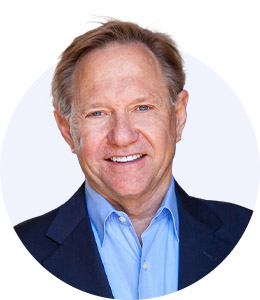When an organization holds learning events for your leaders, are they leadership development or leadership awareness or both?
My experience is that awareness is part of development; however, it is not everything. Many organizations with great intentions provide what they call leadership development, yet after attending hundreds of these, I’ve realized they’re more about introducing a subject, or leadership awareness. The real development comes when people leave the session and put what they learned into practice.
I recently spoke at a two-day leadership development institute, or LDI. I shared that while there are certainly development opportunities in such sessions, much of what takes place is awareness. While awareness is important, the key is moving awareness to action. What matters is what is implemented.
EntreCon is a two-day event in Pensacola, Florida. The name “EntreCon” stands for entrepreneurship and continuous improvement. It is a combination of keynotes and breakouts. Over 450 people attend EntreCon. Many own or work in small businesses. I am always interested in what attendees take away from this event. I ask people to send their takeaways to me and often find they fall into two categories.
Category One leaders write down whether they enjoyed the presentation and then make some very general statements like, “A leader needs to look for joy in the workplace,” or, “The presenter shared how a leader needs to connect to their staff on how what they do is important.” These types of responses usually come from less experienced people and/or people in a culture that is not that action-oriented.
Category Two leaders may write, “At the next meeting with each person, we are going to discuss joy—what brings them joy at work and outside of work. This will help make sure we focus on the joy aspect of their job.” Another example of what a leader may write is, “I will meet with all staff and discuss what they do and how important it is. I’ll also cover the impact of what happens if their work isn’t done: For example, if the kitchen is not kept clean and food fresh, it will lead to a poorer customer experience. We could be cited and shut down, people will lose their jobs, etc.”
When developing people, I find a good process is to ask them to complete these questions: Based on what you heard, what are one or two items you will start to do or do more of? How? For example, if someone says, “I will increase recognition of staff,” ask them to explain how they plan on doing it. The second question is: Based on what you heard, what are one or two things you will stop doing or do less of? For example, a leader may write, “I will stop complaining about how busy I am. I will stop positioning top management in a negative ‘we/they’ way and instead say, ‘Let me look into it and get back to you.’” The third question is: If there was an “aha” moment, what was it? The last question is: What do you want to learn more about?
Asking for takeaways is always advantageous. It helps you see how much the person comprehends, whether the takeaways make sense, and whether anything was missed. Were some of the takeaways surprising, because they revealed that, while a topic had been covered in the workplace (at times covered more than once), the person did not connect the dots? If so, it’s important to ask why. At times, a person may not have the experience needed to comprehend what was covered. They may not have the ability to learn and put into action what is needed. For sure it means that an item needs to be covered more than once.
Repeating a behavior in the correct manner is what creates mastery, and mastery is vital in high-pressure situations. I admire the current New York Mets manager, Buck Showalter. I wrote in a column that Buck has players practice and practice plays and situations so often that “the right way” is engrained in them. After reading the column, Buck added that repetition also keeps the person from doing it the wrong way. Once the best practice is in place, if it is not followed, the discomfort of not doing it right kicks in. Then, corrections can be made.
Learning is demonstrating. It is not unusual after a misstep to hear “lesson learned.” But is the lesson truly learned, or is the person just more aware of the misstep? Often it is the latter. If a person says “lesson learned,” do not let it end there. Say, “Based on what you learned, what action will you be taking moving forward?”
A few tips to help people maximize learning:
- Do some pre-work before the session with people who are attending. Review the agenda, review where they are with their own development, and ask about what you hope they walk away with. For example, let’s say a leader’s turnover rate is too high, and you decide to send them to a session on onboarding. Before the session, say, “It’s really important to walk away knowing what we’re doing well with onboarding and what we can do better.” That way the person goes to the session very attuned to what they should pay attention to.
- When they leave the training, they need to be ready to answer these questions: What will you start or increase? What will you stop or decrease? Any “ahas”? What do you plan on learning more about? This will help them know they’ll be expected to put learnings into action.
- Don’t accept generalities. What gets accepted gets reinforced. If generalities are accepted, a development opportunity is missed. It is good to send observations back and ask for how the leader will move forward, what actions they will take and when, and what results the action will lead to.
- Share resources that are available based on what the person submitted. Do so even if it is a repeat. For example, if a person writes that they need to be better at difficult conversations, think about what resources might help the person in that area. Be sure to follow up with them. This past July, I was sharing with a leader that the book The E-Myth Revisited, by Michael E. Gerber, would be helpful to them. Just recently, I saw the person again and asked if they had ever read the book. They said, “It is on my list,” yet did not say they would move it up. While the person does not report to me, I do want to be helpful. Based on their experience, it may have helped for me to say, “Let’s reconnect in 30 days to discuss what you read.” Close the loop on suggestions, assignments, and make sure people are clear on goals and priorities. Otherwise, they may tend to stay where they’re comfortable rather than moving to where they need to be.
- Determine if coaching might help. There may be some takeaways or lack of takeaways that indicate follow-up and coaching are needed. It could be a statement that makes it evident that the person has not put into place items that had been previously presented. It could be a will issue, or it could be a skill issue.
Organizations spend time and money investing in the development of people. We need to make that development count. While it is nice for sessions to be fun, entertaining, and inspiring—and for lots of notes to be taken—the real value shows up in the achievement of organizational goals. When we move past awareness to action, that’s when true learning occurs. That’s when leaders grow and develop. That’s when organizations start getting better and better.







